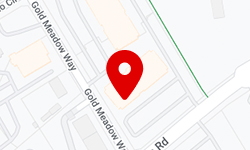- Free Consultation: 916 459 2364 Tap to Call
Lowering your car payments after a Chapter 7
Living and working in the Sacramento area makes it very difficult for regular folks to get by without a car. Oftentimes, a Chapter 7 bankruptcy filing helps debtors in the area get rid of credit card debt and personal loans to relieve some of the pressure. But if the debtor needs to keep the car through the bankruptcy, even the typical options of “reaffirmation” and “ride-through” are insufficient because they don’t actually decrease the monthly payment to the car.
The good news is that bankruptcy provides a solution to those debtors’ problem.
The first step is to file Chapter 7 bankruptcy to get rid of all the pesky unsecured debt that results in lawsuits and incessant calls from debt collectors. In that bankruptcy, the debtor would likely either reaffirm the car loan or ride-through. In essence, reaffirmation is a promise to pay a debt despite its discharge and this effectively waives the benefits of discharge as it pertains to this particular debt. If the debt is unsuccessfully reaffirmed, the debtor can continue to pay on the vehicle, but still enjoy the discharge. In most cases, the lender will not repossess as long as payments are kept up-to-date. (The law may be changing in California to make it so that the lender may not repossess in that situation.)
Some folks might think, “Hey, if the lender accepts a payment on a loan that wasn’t reaffirmed, isn’t that a violation of the discharge injunction?” The answer is No because Section 524(j) of the Bankruptcy Code provides that certain actions of creditors holding security interests in property of the debtor, such as seeking regular payments, do not violate the discharge injunction.
Once the Chapter 7 is complete and the debtor has either reaffirmed the debt or has simply “ridden through,” it’s time to assess the situation again. Are the payments affordable now that so much unsecured debt is gone (and bank levies and garnishments have ended)? NOTE: it is of the utmost importance that the debtor does not miss any monthly payments through this process. After the debtor and her attorney take a long, hard look at the debtor’s post-discharge finances and determine that the car payments are simply too high, it is time to consider lowering that payment.
Depending on the particular situation, the car payment could be lowered in a Chapter 13 bankruptcy. This goal is achieved by spreading out the remaining debt over a longer period and lowering the interest rate. Even after the trustee and attorney fees are paid, the car payment will very often be substantially lower. This can ensure that the debtor can get from her home in Citrus Heights to her work in Natomas and then to pick up the kids after school (for example) and be able to afford the necessities of life.
The fact is that most folks in Sacramento need some debt relief and they need a car. These tools are available by law, but they can only be achieved with the help of an experience bankruptcy attorney who knows what he’s doing.











